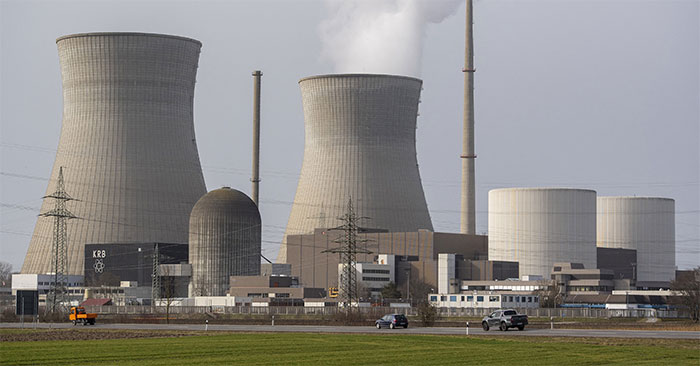Nuclear power plant start-up process
The steps for starting a nuclear power plant are similar to the pressurized water reactors most commonly used in the world and in operation since the 1970s or to the new generation of EPR reactors.
First, fuel - probably enriched uranium pellets placed in thousands of tubes called fuel rods - is loaded into the reactor. These rods are placed in a fuel assembly that is several meters long and weighs several hundred kilograms.

Depending on the reactor's capacity to determine the exact number of rods and fuel assemblies needed.
The fuel assembly is moved to the storage building and placed in the tank. They are then injected into the core of the nuclear reactor. This refueling process can take several days.
As soon as the fuel is loaded, the reactor vessel closes. Then the temperature and pressure of the cooling system gradually increase. During this process, scientists will conduct electrical and safety tests.
The first nuclear reaction was carried out on orders from the nuclear plant's command center. During the several months before connecting to the grid and providing electricity, the nuclear reactor gradually increased its capacity.
A nuclear power plant is an electric power generation system that uses heat energy released from controlled nuclear reactions to create high-pressure and high-temperature steam that is used to drive turbines and rotate the generator.
You should read it
- Experience the destructive power of a nuclear bomb when it explodes right next to you
- The 'mirror super power plant' from 12,000 giant mirrors produces electricity even at night
- Europe: Rising potential in the field of nuclear energy
- What is left of the Earth if all the nuclear bombs in the world fire at the same time?
- The US was prosecuted after the virus attack on Iran
- 'People play' electricity from nuclear power plants to exploit electronic money
 Which type of light bulb is the most economical to use?
Which type of light bulb is the most economical to use? Google Maps tests ads that automatically pop up when users are driving
Google Maps tests ads that automatically pop up when users are driving Why is Vivaldi's anti-AI browser a great option for Internet users?
Why is Vivaldi's anti-AI browser a great option for Internet users? List of Oppo phones that will not be updated to Android 15 (ColorOS 15)
List of Oppo phones that will not be updated to Android 15 (ColorOS 15) Microsoft wants users to switch to the new Outlook before August, or receiving emails will be interrupted
Microsoft wants users to switch to the new Outlook before August, or receiving emails will be interrupted How to display file extensions and view file extensions on Windows 11/10/7/8
How to display file extensions and view file extensions on Windows 11/10/7/8